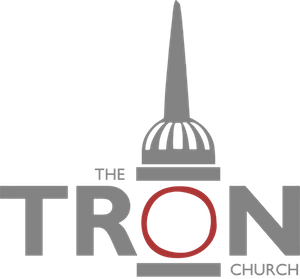"16 So he delivered him over to them to be crucified.
So they took Jesus, 17 and he went out, bearing his own cross, to the place called The Place of a Skull, which in Aramaic is called Golgotha. 18 There they crucified him, and with him two others, one on either side, and Jesus between them. 19 Pilate also wrote an inscription and put it on the cross. It read, “Jesus of Nazareth, the King of the Jews.” 20 Many of the Jews read this inscription, for the place where Jesus was crucified was near the city, and it was written in Aramaic, in Latin, and in Greek. 21 So the chief priests of the Jews said to Pilate, “Do not write, ‘The King of the Jews’, but rather, ‘This man said, I am King of the Jews.’” 22 Pilate answered, “What I have written I have written.”
23 When the soldiers had crucified Jesus, they took his garments and divided them into four parts, one part for each soldier; also his tunic. But the tunic was seamless, woven in one piece from top to bottom, 24 so they said to one another, “Let us not tear it, but cast lots for it to see whose it shall be.” This was to fulfil the Scripture which says,
“They divided my garments among them,
and for my clothing they cast lots.”
So the soldiers did these things, 25 but standing by the cross of Jesus were his mother and his mother's sister, Mary the wife of Clopas, and Mary Magdalene. 26 When Jesus saw his mother and the disciple whom he loved standing nearby, he said to his mother, “Woman, behold, your son!” 27 Then he said to the disciple, “Behold, your mother!” And from that hour the disciple took her to his own home.
28 After this, Jesus, knowing that all was now finished, said (to fulfil the Scripture), “I thirst.” 29 A jar full of sour wine stood there, so they put a sponge full of the sour wine on a hyssop branch and held it to his mouth. 30 When Jesus had received the sour wine, he said, “It is finished”, and he bowed his head and gave up his spirit."
John 19:16-30
What was said in yesterday's Note could not, of course, be said if the four gospel writers had simply been biographers. But they were not writing biography, but bearing witness, and there is a qualitative difference between the two things: And that difference is this: John is writing from the standpoint of the victory of Christ, and interpreting the entire story from Bethlehem to the Easter morning in the light of that victory. This is how we see John's meaning in his gospel, for he has been showing us the picture of human need and woe in the impotent, the blind, the fallen, the hardened and the broken-hearted - and between us, in our need, and despair and eternal loss, he sets the cross. That is the difference Jesus makes, by the death He died. This is why none of the gospel writers required to interpret the story of the cross - they had already interpreted it. With this conception in our minds, it is easy to see a hidden meaning in the title written on the cross by Pilate: 'Jesus of Nazareth, the king of the Jews'. It was written in Hebrew, Greek and Latin, the representative languages of the ancient world. And what we are meant to gather from the inscription thus written is that the eyes of all the ancient world are directed toward the King, the world of which John speaks earlier (3:16) as one that God so loved that He gave His only begotten Son - the Hebrew world, representing religious culture, the Greek representing philosophy, the Roman representing commerce, power and rule (cf also 11:52 with its worldwide implication). King of the Jews, yes, for salvation is of the Jews but Saviour of the world; and the spiritual, moral and intellectual worlds of His day have their eyes focused upon this lonely Figure. This is John's point. The vastness of His conception is staggering.
